Abstract
In cardiac tissue, during partial blockade of the membrane sodium channels, or at high frequencies of excitation, inexcitable obstacles with sharp edges may destabilize the propagation of electrical excitation waves, causing the formation of self-sustained vortices and turbulent cardiac electrical activity. The formation of such vortices, which visually resembles vortex shedding in hydrodynamic turbulent flows, was observed in sheep epicardial tissue using voltage-sensitive dyes in combination with video-imaging techniques. Vortex shedding is a potential mechanism leading to the spontaneous initiation of uncontrolled high-frequency excitation of the heart.
Full text
PDF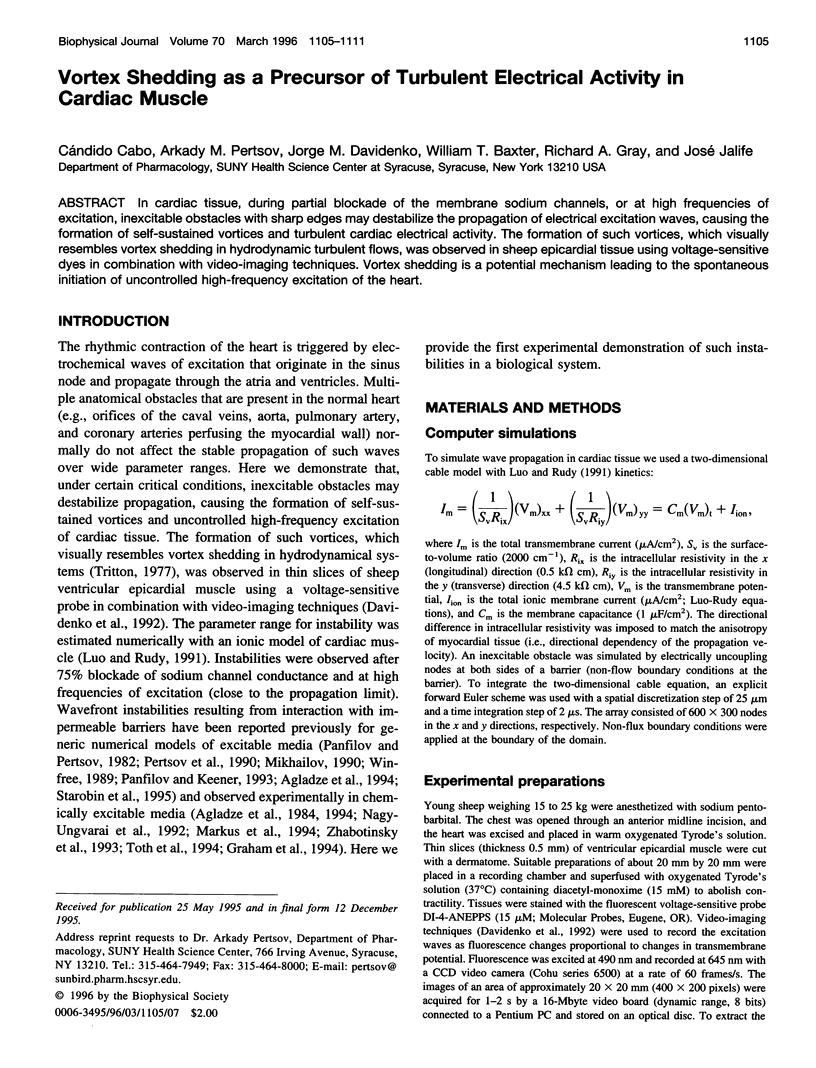
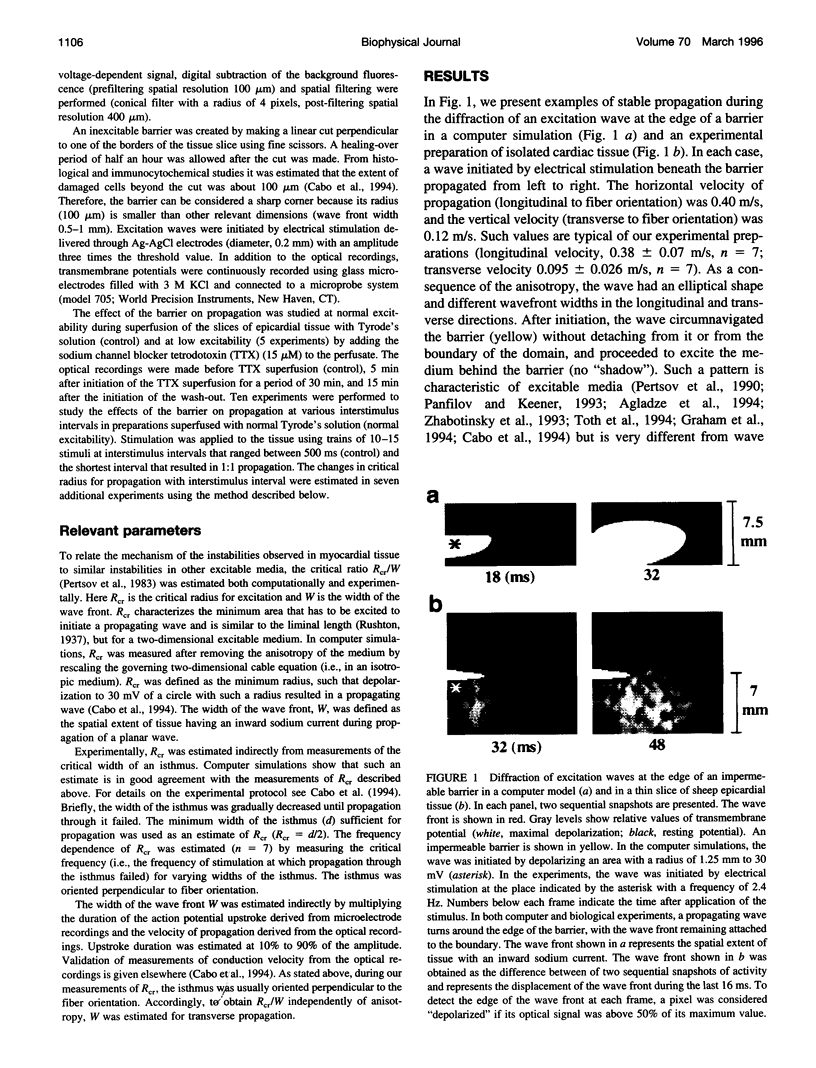
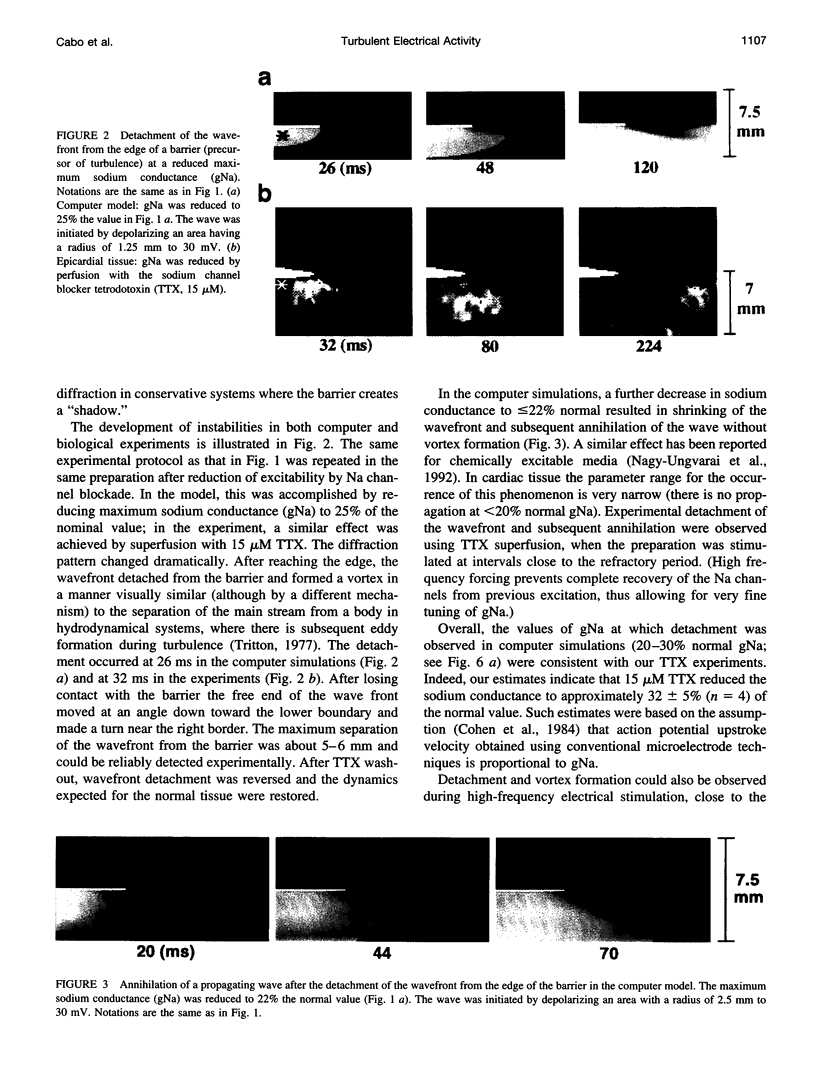
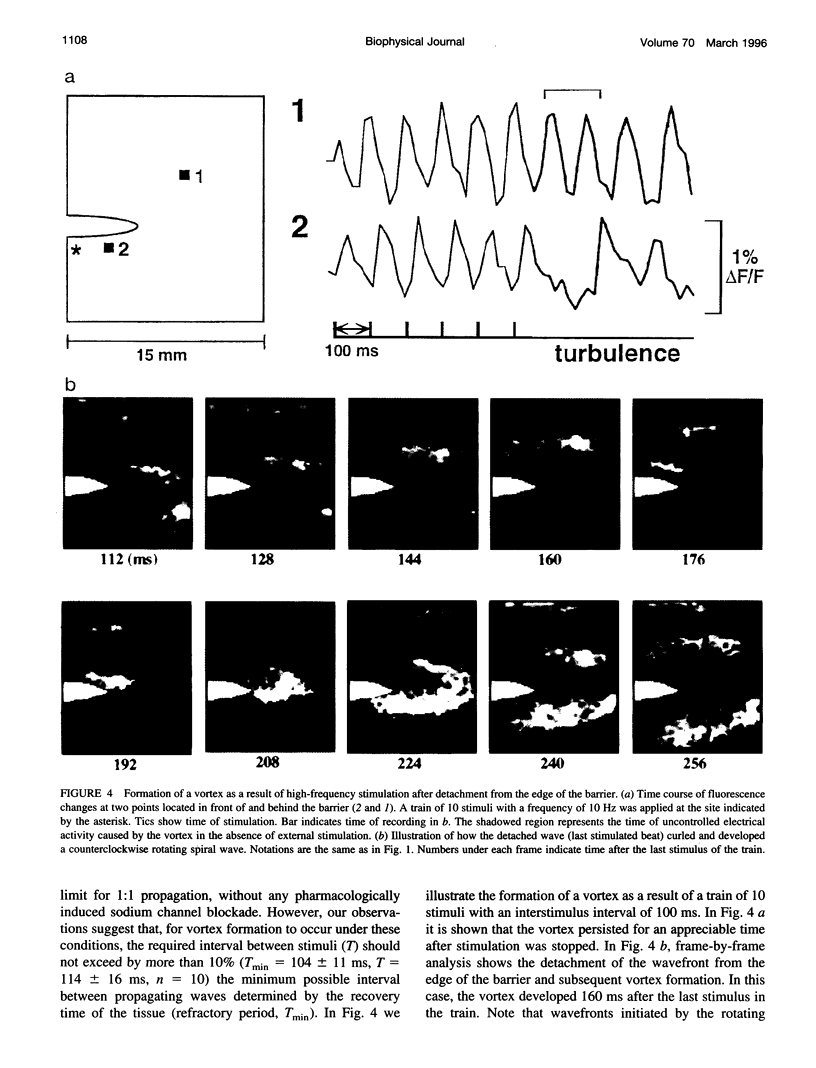
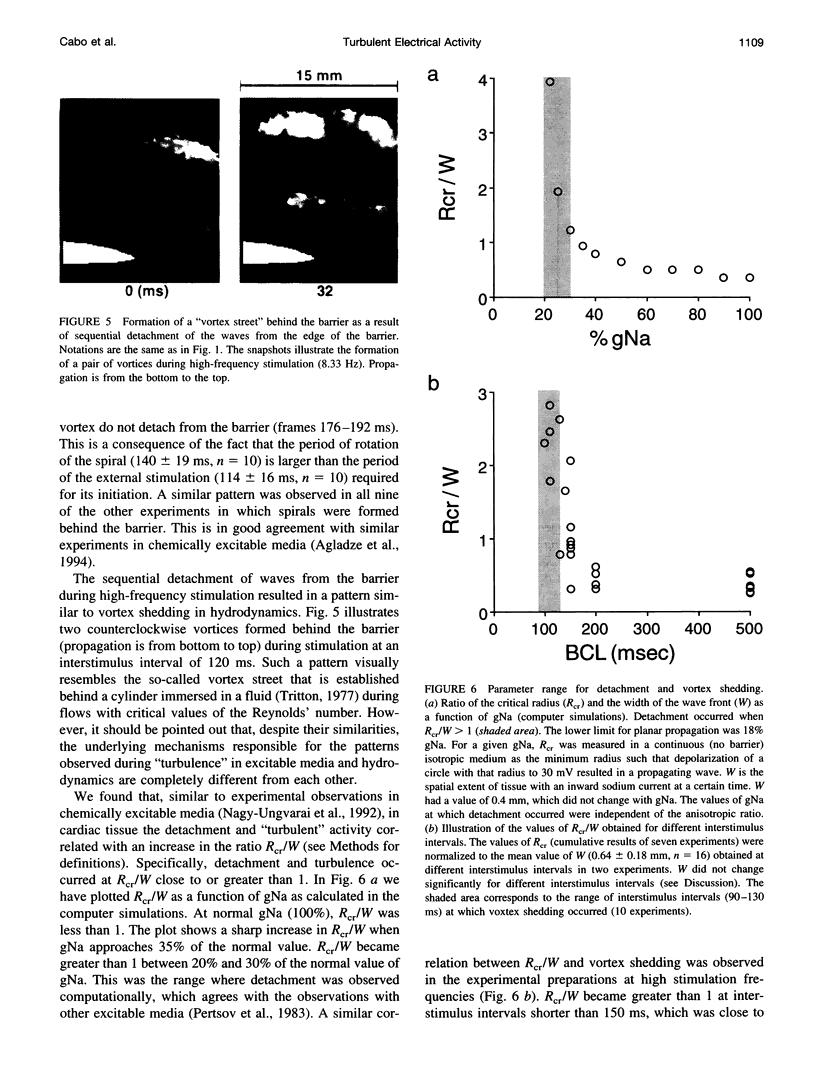
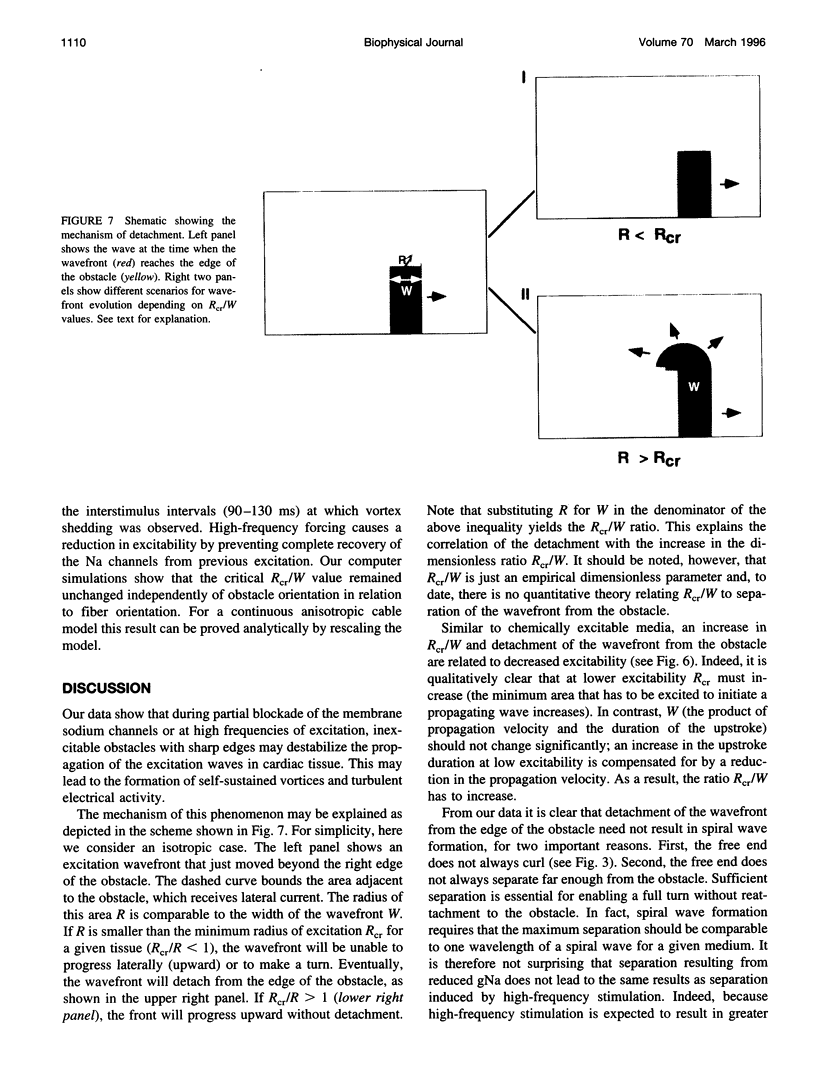
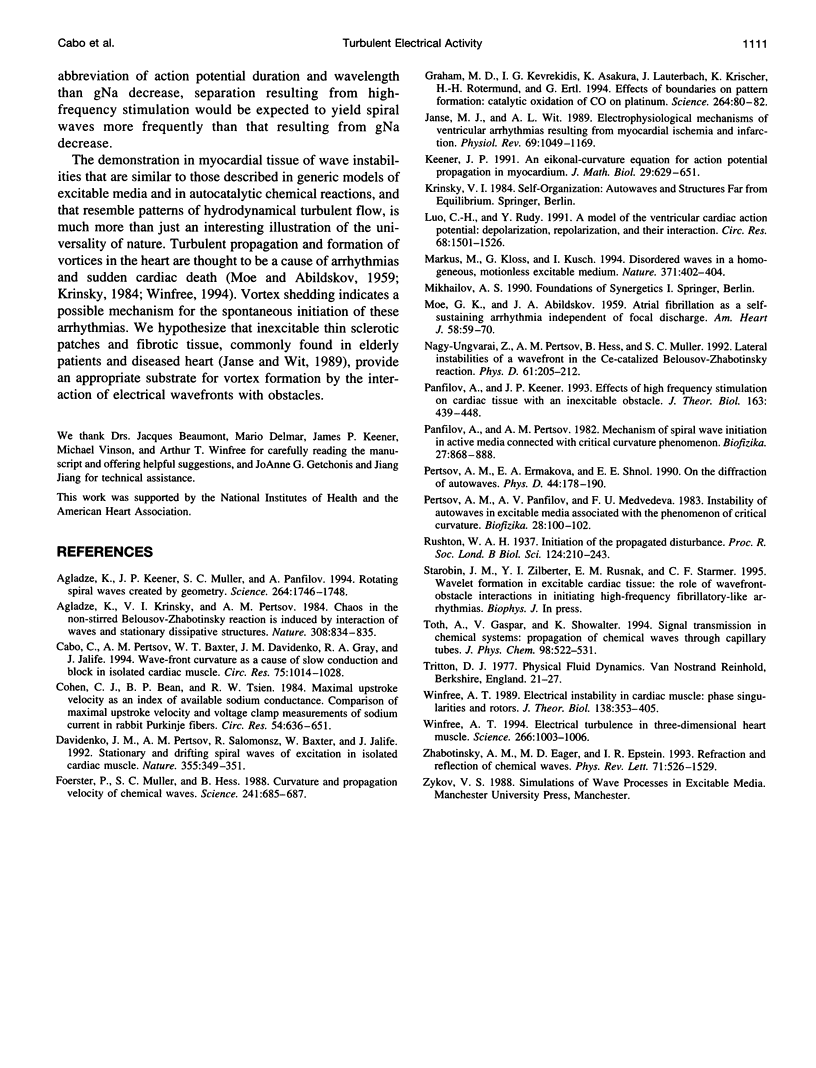
Images in this article
Selected References
These references are in PubMed. This may not be the complete list of references from this article.
- Agladze K., Keener J. P., Müller S. C., Panfilov A. Rotating spiral waves created by geometry. Science. 1994 Jun 17;264(5166):1746–1748. doi: 10.1126/science.264.5166.1746. [DOI] [PubMed] [Google Scholar]
- Cabo C., Pertsov A. M., Baxter W. T., Davidenko J. M., Gray R. A., Jalife J. Wave-front curvature as a cause of slow conduction and block in isolated cardiac muscle. Circ Res. 1994 Dec;75(6):1014–1028. doi: 10.1161/01.res.75.6.1014. [DOI] [PubMed] [Google Scholar]
- Cohen C. J., Bean B. P., Tsien R. W. Maximal upstroke velocity as an index of available sodium conductance. Comparison of maximal upstroke velocity and voltage clamp measurements of sodium current in rabbit Purkinje fibers. Circ Res. 1984 Jun;54(6):636–651. doi: 10.1161/01.res.54.6.636. [DOI] [PubMed] [Google Scholar]
- Davidenko J. M., Pertsov A. V., Salomonsz R., Baxter W., Jalife J. Stationary and drifting spiral waves of excitation in isolated cardiac muscle. Nature. 1992 Jan 23;355(6358):349–351. doi: 10.1038/355349a0. [DOI] [PubMed] [Google Scholar]
- Foerster P., Müller S. C., Hess B. Curvature and propagation velocity of chemical waves. Science. 1988 Aug 5;241(4866):685–687. doi: 10.1126/science.241.4866.685. [DOI] [PubMed] [Google Scholar]
- Graham M. D., Kevrekidis I. G., Asakura K., Lauterbach J., Krischer K., Rotermund H. H., Ertl G. Effects of Boundaries on Pattern Formation: Catalytic Oxidation of CO on Platinum. Science. 1994 Apr 1;264(5155):80–82. doi: 10.1126/science.264.5155.80. [DOI] [PubMed] [Google Scholar]
- Janse M. J., Wit A. L. Electrophysiological mechanisms of ventricular arrhythmias resulting from myocardial ischemia and infarction. Physiol Rev. 1989 Oct;69(4):1049–1169. doi: 10.1152/physrev.1989.69.4.1049. [DOI] [PubMed] [Google Scholar]
- Keener J. P. An eikonal-curvature equation for action potential propagation in myocardium. J Math Biol. 1991;29(7):629–651. doi: 10.1007/BF00163916. [DOI] [PubMed] [Google Scholar]
- Luo C. H., Rudy Y. A model of the ventricular cardiac action potential. Depolarization, repolarization, and their interaction. Circ Res. 1991 Jun;68(6):1501–1526. doi: 10.1161/01.res.68.6.1501. [DOI] [PubMed] [Google Scholar]
- MOE G. K., ABILDSKOV J. A. Atrial fibrillation as a self-sustaining arrhythmia independent of focal discharge. Am Heart J. 1959 Jul;58(1):59–70. doi: 10.1016/0002-8703(59)90274-1. [DOI] [PubMed] [Google Scholar]
- Panfilov A. V., Keener J. P. Effects of high frequency stimulation on cardiac tissue with an inexcitable obstacle. J Theor Biol. 1993 Aug 21;163(4):439–448. doi: 10.1006/jtbi.1993.1129. [DOI] [PubMed] [Google Scholar]
- Pertsov A. M., Panfilov A. V., Medvedeva F. U. Neustoichivosti avtovoln v vozbudimykh sredakh, sviazannye s iavleniem kriticheskoi krivizny. Biofizika. 1983 Jan-Feb;28(1):100–102. [PubMed] [Google Scholar]
- Winfree A. T. Electrical instability in cardiac muscle: phase singularities and rotors. J Theor Biol. 1989 Jun 8;138(3):353–405. doi: 10.1016/s0022-5193(89)80200-0. [DOI] [PubMed] [Google Scholar]
- Winfree A. T. Electrical turbulence in three-dimensional heart muscle. Science. 1994 Nov 11;266(5187):1003–1006. doi: 10.1126/science.7973648. [DOI] [PubMed] [Google Scholar]
- Zhabotinsky AM, Eager MD, Epstein IR. Refraction and reflection of chemical waves. Phys Rev Lett. 1993 Sep 6;71(10):1526–1529. doi: 10.1103/PhysRevLett.71.1526. [DOI] [PubMed] [Google Scholar]








